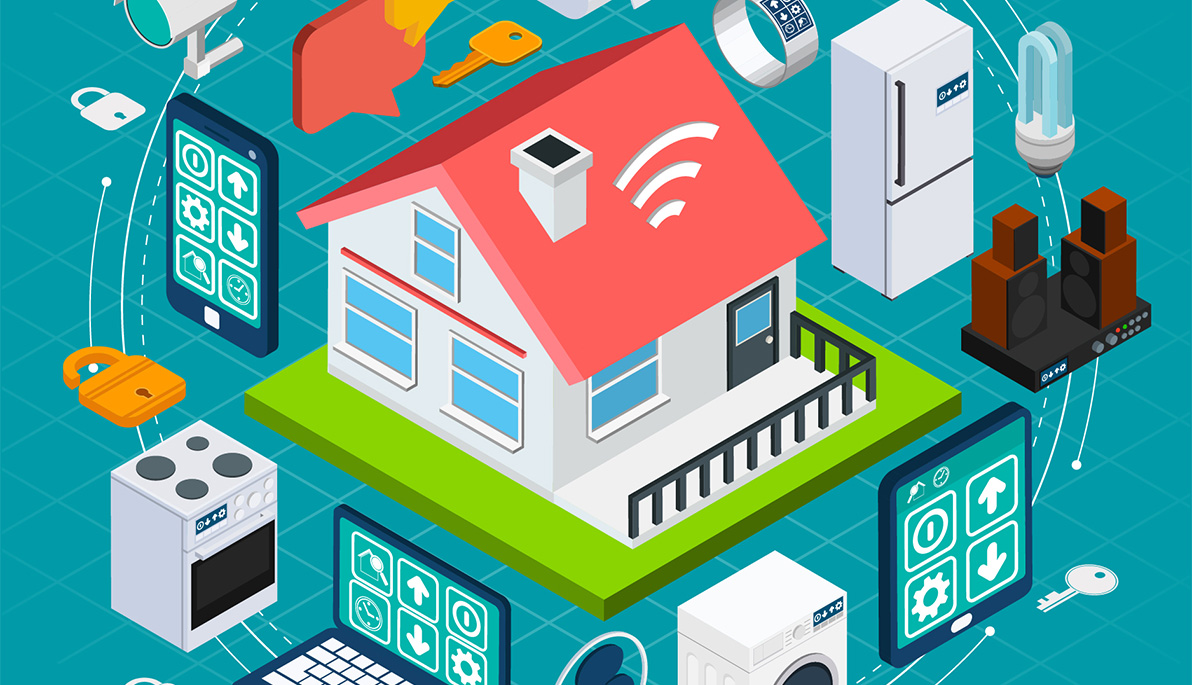News
The Internet of Things Requires Constant Vigilance
January 16, 2018
Did you receive an Amazon Alexa or Fitbit as a gift this Christmas? You’re not the only one. According to Babak D. Beheshti, Ph.D., associate dean and professor at NYIT School of Engineering and Computing Sciences, the explosion of Internet of Things (IoT) devices has moved beyond the pilot phase and sales will continue their exponential growth into 2018. At the same time, consumers who are part of that trend are being warned that not all IoT devices are secure and that they may put their personal data at risk when they use them.
“[The industry] has entered a stage where the focus on the number and diversity of connected devices has shifted towards a more universal and global view of products and services that incorporate IoT as an integral part of the value they provide to consumers. For example integrated home automation devices that are all compatible with each other and are programmed and controlled via a unified app or interface” says Beheshti. Market research company IHS Markit predicts that the number of connected devices will grow to $30.7 billion in 2020 and General Electric forecasts that the IoT industry will add $10 to $15 trillion to worldwide GDP growth by 2030. This growth will occur in multiple directions, including special purpose connected devices, such smart thermometers and smart door locks, wearable devices, and smart clothing.
Given this explosion, Beheshti offers the following perspective on what that growth means for the industry and consumers:
Personal data collected from IoT devices means everything when it comes to marketing.
The mounting adoption of devices such as Amazon Alexa or Google Assistant, along with a growing trend of compatibility (inter-operability) of various IoT devices with devices such as Alexa, will provide an opportunity for businesses to collect data to market to consumers more effectively. Businesses can focus their products and services to their target specific audiences by collecting data through IoT devices, then by aggregating, storing, and analyzing the data (Big Data), and finally by using big data analytics and machine learning algorithms to extract “deployable” information. For example, by analyzing a consumer’s behavior and recommending new devices, products, or services.
But the use and collection of data poses risks to consumers.
Along with enormous gains in options and conveniences that come with using an IoT device, consumers also open themselves up to the risk of loss of privacy, and potentially unauthorized access to personal information. Companies using Big Data, predictive analytics, and artificial intelligence have access to significant behavioral and financial attributes of individual consumers, including shopping habits and personal information. This abundance of data stored in the current, inherently unsecure networks poses a security risk unprecedented to anything we may have seen in the past.
[Market research company] Evans Data indicates that 92 percent of IoT developers think security will continue to be an issue in the future. In fact, security will be the major challenge for manufacturers and consumers alike. (Cyber-criminals, for example, can attack devices in your home and car to access information, disabling them to breach your perimeter.) Manufacturers must implement security measures to prevent data breaches.
Consumers need to take an active role in protecting themselves.
A continued level of vigilance in securing any connected device should become the norm in our daily lives. Consumers need to regularly change passwords, enable encryption, and do firmware updates on everything from their mobile and wearable devices (smart phones, tablets, Fitbits etc.), to home video monitors, vehicles with Wi-Fi, smart door locks, and even refrigerators and washing machines.





